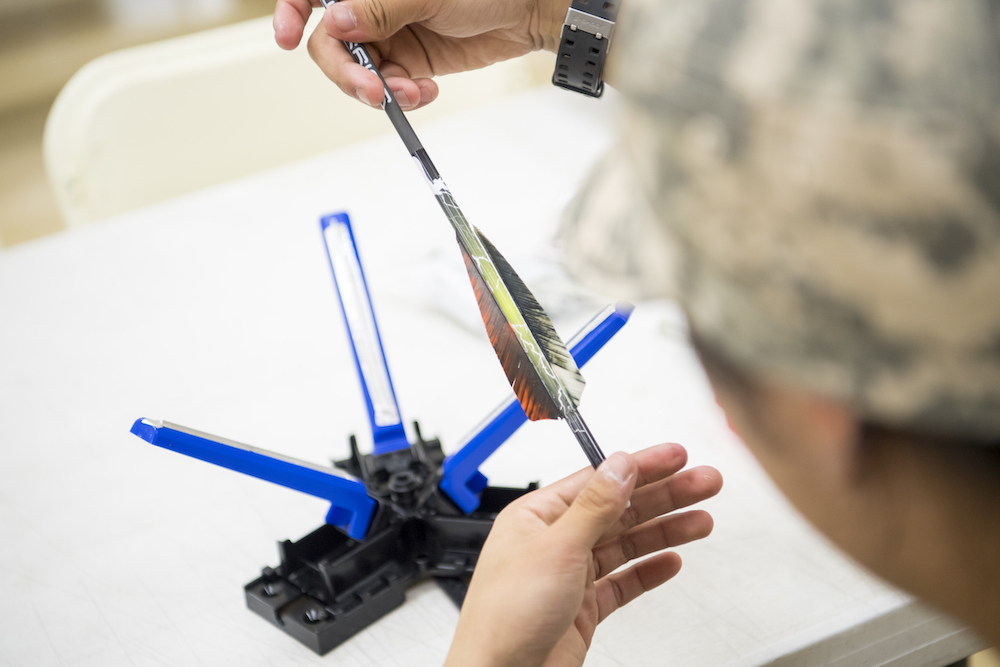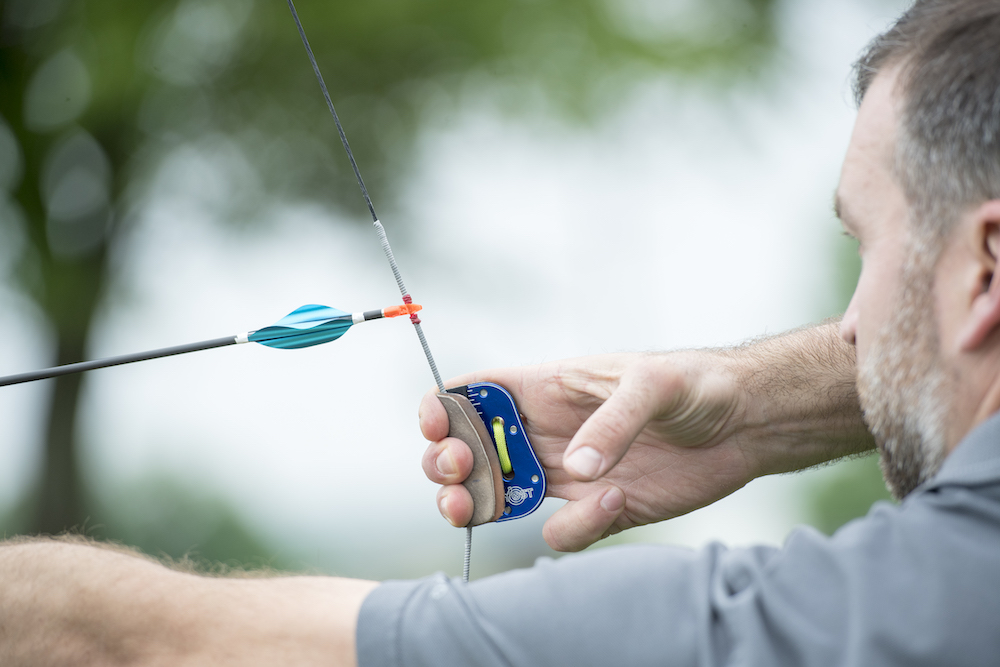Straight and true arrow flight doesn’t come solely from having a well-tuned bow, but also from having the appropriate fletching for your arrows. Choosing the right fletching as well as the correct placement and orientation of it on the arrow shaft is one of the final steps to achieving tight groups and higher scores.
Fletching is used to help with arrow flight; the drag from the fletching will “pull” the rear end of the arrow to make the arrow fly straighter.
The first consideration on what type of fletching you need is whether your arrows will be used for indoor archery, outdoor archery or a combination of both. Arrows used for indoor competition will require larger fletching. This will help correct the arrow flight slightly faster over the shorter distance of 18 to 25 meters. Arrows for outdoor competition will generally require smaller fletching to allow the arrow to maintain speed while the fletching does its job.

Larger fletching will always slow an arrow down exponentially faster than smaller fletching, which is why arrows used for outdoor shooting usually have smaller fletching attached. Shooting larger fletching over a longer distance will make the arrow “drop out of the sky” due to all the velocity lost through the drag imparted on the arrow. Also, larger fletching shot over a long distance will magnify any mistakes that the archer makes upon release of the arrow. But indoors, large fletching can offer a great advantage to archers, and often you’ll see archers using feathers on their indoor arrows. Feathers are lightweight but have a lot of drag, so they correct the arrow very quickly without greatly affecting the overall weight of the arrow.
Arrows meant for long-range outdoor competition will greatly benefit from smaller, lighter fletching. Compound archers generally prefer fletching material made of plastic, while their recurve peers prefer to shoot spin-vane lightweight fletching. But there are always some cases where a recurve archer prefers fletching used for compound arrows, and vice versa.

The degree of angle, or helical, at which the fletching is installed on the arrow will also affect arrow flight. Simply put, helical refers to the amount of offset the fletching has on the arrow, and this offset is meant to make the arrow spin along the long axis of the arrow shaft. This spinning motion is very similar to the spin of a bullet or football; it is meant to stabilize the arrow while in flight. Although you may think that more spin equals more stability, this is not always the case, and there is a law of diminishing returns here. Without enough helical, the arrow won’t spin and therefore will not stabilize. But with too much helical, you run the risk of introducing a corkscrew trajectory to your arrow, as well as imparting too much drag. A great starting point is to give your arrows a small amount of helical (either left or right, but consistent for all fletching) and observe your group size. Outdoor archers should measure their group sizes in both calm and windy conditions; the goal is to have minimal change in measurement regardless of the weather.
Experimenting with a variety of fletching will be the best way to figure out what works best. If you are stuck trying to decide between different fletching styles, orientations, etc., then keep several arrows fletched with your potential setups. Shoot each of the different sets of arrows with the different fletching modifications and track and record their results to see which of your sets gives the best results. Like many other things in archery, fletching is very personal for everyone, and what works for archer A will not necessarily work for archer B. Make sure to pick the setup that is most forgiving, and then all you’ll have to worry about is replacing your fletching because of all the tight groups you’re shooting.




